June 11, 2024
I’m about to fly to London for the Health Optimisation Summit, so long-haul flight management has been on my mind lately.
Turns out, it often doesn’t matter how fancy your compression socks are or how many bodyweight squats and calf raises you do in the back of the airplane, because…
…when you are on that plane, you are inside a tiny metal tube that’s being bombarded by solar radiation and that’s completely disconnected from the earth’s natural magnetic field. That’s tough to fight against and still feel good after (though I’m about to tell you how you can hack it).
You are also exposed to Wi-Fi signals (often available during the whole flight), people firing up their phones and checking email (which happens for the entire gate-to-takeoff and landing-to-gate phases — often when there’s just a bar of reception, which makes the radio frequencies being emitted even higher!), dehydration from altitude, dry filtered air, toxin-laden airplane food, bad water, airborne pathogens, and — if you are traveling across multiple time zones — jet lag.
Jet lag is a chronobiological issue that occurs when you travel across multiple time zones. The day-and-night cycle of your destination isn’t what you’re accustomed to, so your body clock isn’t in sync with the destination’s time. The problem is exacerbated because eating, sleeping, hormone regulation, and body-temperature-variation patterns also do not correspond to what you are used to. Jet lag sucks, as all frequent flyers know. The symptoms include longer sleep onset latency (especially if you are flying east), early wake times (especially if you are flying west), interrupted sleep, poor cognitive performance, fatigue, headaches, irritability, and problems with digestion, such as indigestion, constipation, and even reduced interest in and enjoyment of food.
So, there’s a so-called “dark side to hypermobility,” and thus not much beats flying for radiation exposure, full-body inflammation, free radical production, reduced recovery, and inhibition of important biological processes like protein synthesis.
I don’t know about you, but when I am traveling and have to perform at peak capacity, often just hours after my flight touches down, I simply can’t afford the full-body damage and loss of fitness that can occur every time I hop on a flight to a race or conference.
Fortunately, there are powerful, proven strategies to overcome jet lag and maintain peak mental and physical performance no matter how many time zones you cross. By understanding how to realign your body’s natural clocks and mitigate the stresses of air travel, you can step off any flight feeling energized and ready to operate at your highest level. In this article, you’ll gain insights into the top science-backed tactics for conquering jet lag and arriving at your destination primed for success.
Mastering Jet Lag 101: How to Cross Time Zones Like a Pro
The fundamentals of managing jet lag are quite similar to those for maintaining good sleep overall. One effective strategy is to implement zeitgebers (a term that means “time giver”). These are environmental cues, such as light and temperature, that help regulate your circadian rhythms — the internal 24-hour cycle that dictates your sleep-wake pattern. By adjusting these cues, you can effectively increase or decrease your sleep drive, which is particularly useful when crossing time zones or resetting your internal clock.
The most important zeitgebers are:
Plenty of natural light and blue light during the day and mitigation of bright light at night
Eating meals timed to the normal eating time in the location you’re in, which means opting out of intermittent fasting or breakfast skipping if you’re in a new time zone and instead consuming a nutritious breakfast that ideally includes 20 to 30 g of protein
Cold exposure in the early hours of the day, then sleeping in a cool environment at night
Movement, preferably via an exercise session performed within the first two to four hours after waking
Second, you must implement the following four gold-standard sleep hygiene components:
1. Light
To manage light, get exposed to natural sunlight and use a light-producing device like the EVY or Beacon40 flashing light and the AYO or Re-Timer glasses by day, then dim the screens, don blue-light-blocking glasses, and implement red-light bulbs and/or red-light headlamps at night.
2. Temperature
Keep the room as cool as possible (60 to 64 degrees Fahrenheit is the sweet spot), and avoid hard exercise sessions and heavy or spicy meals in the three hours leading up to bedtime.
3. Sound
To manage sound, use earplugs and background-noise-producing apps such as SleepStream or sleep with a set of soft wraparound headphones like SleepPhones that play NuCalm or brain.fm tracks or a yoga nidra session (my favorites are the tracks from Ally Boothroyd, free on YouTube).
4. Stress Management
The fourth component of sleep hygiene — stress management — is often the trickiest to tackle. I used to be the guy who would wander in my hotel room and open my laptop on the bed or keep a business book handy by the bedside.
Bad move.
That routine mentally associated my bedroom with stress, stimulation, and work.
This can be all the more problematic for hard-charging, high-achieving people who are often genetically hardwired (as I learned when I interviewed Doug Brackman, author of Driven) with patterns that would have allowed them to be a good, awake, and alert sentry or soldier four thousand years ago but it doesn’t serve you well in the modern era where an incoming message to your laptop propped up on your belly in bed really isn’t as big of a sleep-disrupting threat as your brain perceives it to be.
The two genes that most affect this stress response are the COMT and ADRA2B genes. For example, your COMT gene determines how fast your body can clear important neurotransmitters like dopamine and noradrenaline. If you have a slow COMT gene, you are more likely to stay stressed for a longer time, and stress can of course interfere with your sleep.
If you’re one of those folks who is genetically hardwired to lie awake at 3:00 a.m. plotting out twenty-seven crazy business ideas and reprocessing your recent argument with a coworker, my best advice is to eliminate as many forms of work as possible from the bedroom (including business books), banish the laptop and TV, and use software like the 1TapZap, the red light iPhone trick, or the “greatest health hack ever” smartphone shortcut to render your device useless, boring, and dim at night.
9 Ways to Prevent Jet Lag From Ruining Your Trip
So besides managing light, temperature, sound, and stress, what else can you do about jet lag?
Drawing on expert insights and personal experience, I’ve compiled a list of nine unique and effective strategies to help you adjust swiftly and comfortably to your new environment. From grounding techniques to high-dose vitamin regimens, the methods mentioned below go beyond the usual advice, offering innovative ways to beat jet lag and keep you feeling your best.
1. Practice Grounding
Grounding, which you can learn more about in this podcast, is the practice of exposing your body to the natural magnetic frequencies produced by the Earth. Grounding becomes most effective after flying since hurtling forty thousand feet above the planet in a metal tube is about as disconnected from the Earth as you can get.
How do you ground yourself when traveling?
As soon as I land at my destination, I make it a point to get outside barefoot, go swimming in a pool or natural body of water, or don grounding shoes or sandals for a walk.
I also use pulsed electromagnetic field (PEMF) therapy devices, which use low-frequency electromagnetic waves (set at about 7 to 10 Hz) to stimulate and promote healing in the body’s cells and tissues. For more portable, user-friendly PEMF devices, I recommend checking out CELLER8, IcesM1, and Flexpulse. I also travel with a lightweight grounding mat from Ultimate Longevity that I can easily place under the sheets on any hotel bed.
2. Get Some Light Exercise In
Research suggests that exercise can regulate circadian rhythms. As lousy and miserable as you may feel training after a day or two of international travel, the sooner you can vigorously move after arriving at your destination, the sooner you will bounce back from jet lag and normalize your circadian rhythm.
You don’t have to do a killer workout or an epic run. If I am feeling a bit blah after traveling, my top three exercise choices are walking (barefoot or in grounding shoes or sandals if possible) in the sunshine or on a beach, swimming (preferably in cool or cold water), and outdoor barefoot yoga.
For long layovers, I’ll often log up to ten thousand steps walking through the airport while listening to an audiobook or podcast, with random bouts of air squats or push-ups thrown in if I find a quiet spot where my grunting won’t annoy the seated Cinnabon eaters.
3. Avoid Stimulants Until You Arrive at Your Destination
To reduce jet lag, it is a relatively common recommendation to limit the consumption of caffeine, alcohol, and nicotine.
Because these chemicals overstimulate the central nervous system (CNS) and have the potential to disrupt an already disrupted circadian rhythm, I absolutely agree and do not go near caffeine or any other CNS stimulant while en route to my destination.
But once you arrive at your final destination, these same compounds can work wonderfully to keep you awake until it is officially bedtime in your new time zone or to jump-start your cortisol drive as you get accustomed to the morning hours of your new destination.
You can also defeat jet lag by taking any of the nootropics or smart drugs listed in the two articles below:
4. Take Melatonin
When I’ve traveled across more than three time zones, before going to bed my first night at my final destination, I consume a 500 to 1,000 mg sledgehammer dose of melatonin via the Sandman suppositories from Mitozen.
This seemingly insane amount of melatonin was prescribed by an oncologist friend of mine to help his patients deal with pain at night, and upon learning this from him, I gave it a few tries as a jet lag hack. Additionally, Dr. John Lieurance, who I consider the top authority on melatonin, recommends this protocol, which you can learn more about here.
It works, but you may find yourself extremely groggy the next morning, in which case ample morning light exposure can kick it out of your system faster. Melatonin is also a natural anti-inflammatory, so it will help reduce the inflammation that occurs during air travel.
5. Drink Lots of Water
You become dehydrated when sitting in the dry cabin air of an airplane, so a crucial part of overcoming jet lag is drinking enough water. I have experimented with a very high water intake and have found that it helps quite a bit compared to the disappointingly tiny water cup handed to me by the flight attendant every couple of hours.
I drink close to 16 to 20 ounces of water, nearly a full bottle, each hour and feel a distinct difference in sleep, mood, and energy upon landing.
Just make sure that, if you are in a middle or window seat, your aisle-based seatmate is spry and willing to move every time you need to pee, or you can politely ask to switch seats.
Find water boring?
Travel with a small bottle of organic stevia and add it to club soda or sparkling water to create a cream soda-esque experience. As a word of caution, consuming this much water per hour may cause hyponatremia (water intoxication), so I recommend that you consume trace liquid minerals or electrolytes with each bottle. To upgrade your water with a potent dose of jet-lag-fighting antioxidants, add a scoop of vitamin C powder and a few hydrogen tablets.
6. Take a Cold Shower
In addition to lowering body temperature prior to sleep, cold showers reduce inflammatory cytokine levels, activate brown adipose tissue to burn fat, and induce a hormone response, particularly by causing a spike in adrenaline.
I have gone so far as to go into an airline lounge in the airport for a ten-to-fifteen-minute cold shower during a long layover. I also take a two-to-five-minute cold shower in the hotel when I arrive at my final destination. Finding a nearby spa allows you to take things to the next level, as you can do hot-cold contrast therapy with several rounds of dry sauna exposure followed by a cold plunge or cold shower.
Just make sure you’re not getting so cold that you’re shivering because that level of chilling will result in an adrenaline surge that can actually keep you awake.
In other words, get cold but not too cold.
Splashing lots of cold water in your face can also help, but it is not nearly as effective as immersion or showering. Cold showers also dilate your blood vessels because they release more nitric oxide, and the subsequent increase in glucose and oxygen uptake by your organs and muscles can dramatically reduce jet lag.
7. Consume Curcumin
Curcumin, which is found in turmeric and curries as well as in concentrated supplement forms, is a potent antioxidant when taken on an empty stomach both before and after flying. It easily crosses the blood-brain barrier, shuts down inflammatory cytokines in neural tissue, and may even boost testosterone and growth hormone production.
Upon landing at my final destination, I take about 1,000 mg of curcumin from a highly absorbable source such as Meriva, which is found in many supplements, like the Thorne multivitamin, or from the turmerosaccharides in a serving of Kion Flex.
8. Seek Out Sulfur
Sulfur-rich foods are excellent antioxidant precursors and help reduce the inflammation that can occur when flying.
Sulfur is found in broccoli, cauliflower, garlic, onions, and Brussels sprouts. Of course, if you opt for sautéed garlic and onions preflight, you may need to brush your teeth afterward (unless you plan on creating enemies during the flight).
Fermented foods like kimchi or sauerkraut are also good sulfur sources, and as a bonus, can help to restore the microbiome imbalances caused by air travel, though a good probiotic can also work well for helping the gut to recover.
Supplements containing sulfurous compounds, such as glutathione, N-acetylcysteine, MSM, and DMSO, can be even more effective than sulfurous foods. But if you squeeze a few meals with these foods into the days leading up to your flight and just after, you will feel much better when you travel and will be less likely to suffer immune system deficits.
For an even more potent dose of antioxidants, you can take a cocktail of (or get an IV with) glutathione, astaxanthin, selenium, vitamin E, CoQ10, N-acetylcysteine, vitamin C, and alpha-lipoic acid. Animal studies have shown that a large dose of antioxidants like this can reduce the oxidative stress caused by the radiation experienced during airline travel, as can taking a large dose of DHA, shilajit, methylene blue, chlorella, or spirulina before flying.
For faster cellular repair and recovery, I also recommend a dose of NR, NMN, or NAD, which also works very well for sleep deprivation, particularly when combined with creatine.
9. Get a Hit of Oxytocin
Oxytocin is a potent hormone that lifts your mood and acts as an antioxidant, antidepressant, and anti-inflammatory.
It’s naturally released after sex and during childbirth and breastfeeding, but you can supplement with an oxytocin nasal spray dose of about 10 to 21 IU per day, so you can get an oxytocin fix at any time and any place, including while you are traveling.
In addition to using a nasal spray, you can hug someone or, while it is slightly less effective, warmly shake someone’s hand. Bodily contact will cause your brain to release low levels of oxytocin.
So when you get to your destination, find the first person who is okay with it and give him or her a big, loving bear hug. Or do some partner carries up the stairs at the hotel (which, incidentally, makes a great travel workout).
Just brush your teeth first if you used the garlic-and-onions trick…
Additional Tricks and Tips to Feel Amazing After Your Flight
Whether you’re embarking on a summer vacation, traveling for work, or visiting family, the last thing you want is for jet lag to ruin your experience. In addition to the previous nine tactics, there are plenty of other tricks you can use to feel amazing when you hop off your flight. Implementing the additional tips below will help you arrive at your destination feeling refreshed and ready to make the most of your trip:
Don’t eat until it’s mealtime in your final destination, and especially don’t get up in the wee morning hours to eat, as consuming food outside of normal eating times will make adjusting your circadian rhythm far more difficult. If you find yourself lying awake with the munchies at 2:00 a.m. in Tokyo, try a yoga nidra session instead. That’s my best trick.
Wear full-body graduated compression socks on the flight to control blood pooling and swelling in the legs and feet.
Use magnesium. It’s not only going to help you sleep at night but can offset some of the electrochemical imbalances that occur during airplane travel.
Travel with Omica Organics vanilla — or butterscotch toffee-flavored liquid stevia that you can add to club soda or seltzer water for more flavor (trust me, it tastes like a delicious vanilla cream soda) and to help keep hunger at bay.
Smear the insides of your nostrils with sesame oil or olive oil to keep your nasal passages moisturized in the dry cabin air. You can also use a nasal spray for mold and mycotoxin exposure, like the peptide VIP or the Glutastat intranasal spray, along with a throat spray like Beekeeper’s Naturals propolis spray or liquid silver spray added to a cheap travel spray bottle from Amazon. Thieves essential oil added to water is also good for the immune system during travel.
Use the light-producing Re-Timer or AYO glasses on your first morning at your final destination, especially if you know you will be indoors for much of the day or you won’t be able to get any sunshine.
Have any questions, thoughts, comments, or feedback for me on how to conquer jet lag? Drop me a line below, and I’ll be sure to answer you!
For more insights into biohacking your travel, I recommend checking out the following resources:
How to Biohack International Travel, Ben’s Inexpensive Hair Loss Prevention Protocol, Top Ancestral Living Strategies For A Longer Lifespan, & More With Jag Chima.
Protecting Against The Damaging Effects Of Travel, Ozone Treatments For Longevity, Stacking Stem Cells With NAD & Exosomes, & More With Darshan Shah, MD.
Quick Jet Lag Tips (Video)
4 Of My Top Quick Tips To Keep Travel From Destroying Your Body.
How To Get Fat When You Fly
Ways To Get Smarter, Jet Lag Hacks, Cold Water VS Cryo, and Neuro-athletics
11 Ways To Biohack A Hotel Room, Stay Healthy When You Travel & Keep Globetrotting From Slowly Killing You.




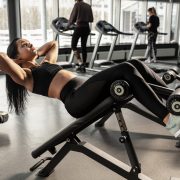
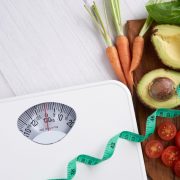
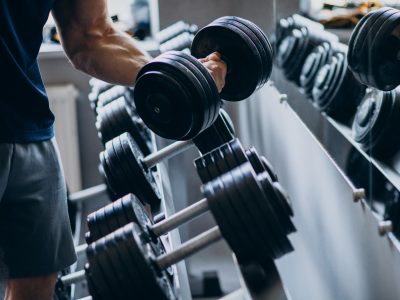

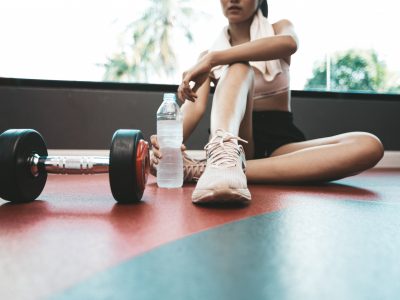
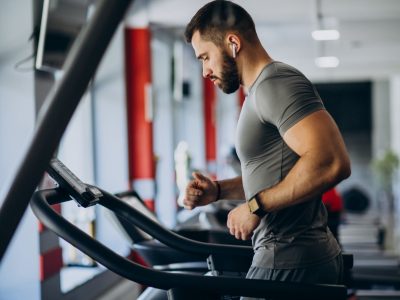

Comments